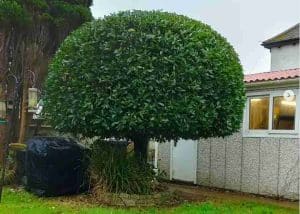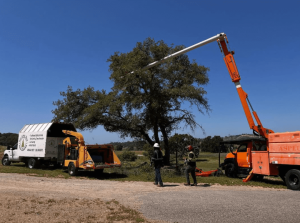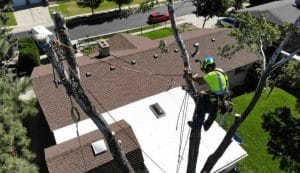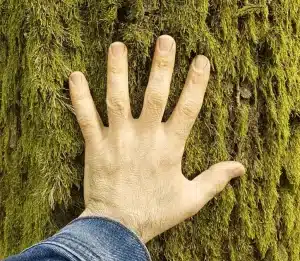Yes, home insurance usually covers tree damage if the tree falls because of a storm, lightning, or other covered event and causes damage to your home or other insured structure. But not all situations are covered. If the tree was already weak or if it just lands in your yard without hitting anything, your insurance may not help. In this guide, you’ll learn exactly when your homeowners policy will pay, when it won’t, and what to do after a tree falls—plus smart tips to protect your home before the next storm hits.
Table of Contents

What Tree Damage Is Usually Covered by Home Insurance in Florida
Most homeowners insurance policies especially HO-3 or HO-5 types do cover tree damage when certain conditions are met. The key requirement? The tree must fall due to a covered peril, and it must damage an insured structure.
Common Covered Perils in Florida:
- Hurricane or windstorm
- Lightning strikes
- Fire
- Falling snow or ice (uncommon in Florida but still listed)
If a tree falls on your home, garage, shed, or fence because of one of these events, your insurance will likely cover:
- Repair of damaged structures
- Tree removal for the part that caused damage
- Emergency services (e.g., tarping, stopping water intrusion)
Be sure to review your policy’s coverage section for specific limits and definitions.
When Tree Damage Is NOT Covered
Some tree-related damage simply isn’t covered—no matter how shocking or costly the event.
Situations That Usually Aren’t Covered:
- The tree was already rotting or leaning.
If your tree was in poor condition and fell during high winds, your insurer may deny the claim for lack of maintenance. - No insured structure was damaged.
If the tree landed in your backyard without hitting anything, it likely won’t be covered. - The fall was caused by flooding.
Most Florida home insurance policies exclude flood-related events. You’d need separate flood coverage. - The tree was decorative landscaping.
If it was just part of your lawn design, it usually isn’t protected unless you added specific coverage for landscaping.
Neighbor’s Tree Falls on Your House Who Pays?
When your neighbor’s tree falls on your property during a storm, it may seem logical that they should pay. But in most cases, you handle your own damage.
Standard Procedure:
- You file a claim with your insurance company.
- You pay your deductible.
- If the neighbor was negligent, your insurer may try to recover the costs from them.
Unless you have written proof that your neighbor ignored a dangerous tree, you probably can’t recover costs through their policy.
How Much Does Insurance Pay to Remove a Tree?
Even when a fallen tree is covered, that doesn’t mean your insurer will cover the full cost of removal. There are caps.
Typical Payout Limits:
- $500–$1,000 per tree
- $1,500–$2,000 per incident
Florida-Specific Deductibles to Know
Florida homeowners have to deal with two types of deductibles, depending on the type of event:
1. Hurricane Deductible
- Kicks in only for named storms.
- Set as a percentage of the home’s insured value—often 2% to 10%.
2. All-Other-Perils Deductible
- Applies to non-hurricane events (like fire or wind).
- Flat fee, usually between $500 and $2,500.
Steps to Take Immediately After a Tree Falls
Follow this list if a tree crashes onto your home or yard:
- Ensure safety – Don’t touch live wires or unstable trees.
- Take photos and video – Capture angles from inside and outside.
- Call your insurer – File the claim immediately.
- Limit further damage – Use tarps or turn off water/power if needed.
- Save receipts – Keep records for all emergency spending.
- Inform your mortgage company – Especially if large repairs are needed.
How to File a Home Insurance Claim for Tree Damage in Florida
You typically have one year from the date of damage to file. Here’s what to do:
- Use your insurer’s online portal or hotline to start the claim.
- Submit all photos, receipts, and tree condition details.
- Request and review the adjuster’s damage report.
- Follow up frequently—in writing—until resolution.
Consider hiring a licensed public adjuster if the insurer’s offer seems too low.
Tips to Reduce Tree Damage Risk Before Storm Season
Taking preventive steps can help you avoid claims altogether:
- Hire an arborist to inspect trees annually.
- Trim limbs hanging over your home, fence, or driveway.
- Check for root issues caused by poor drainage.
- Photograph your property before storm season for documentation.
- Ask your insurer about discounts for storm prep upgrades.
What to Do If Your Tree Damage Claim Gets Denied
If your claim is rejected, don’t give up. Try these options:
- Request a second inspection from a different adjuster.
- Hire a public adjuster to argue your case.
- Use Florida’s mediation program, often free or low-cost.
- File a formal complaint with the Florida Office of Insurance Regulation (OIR).
- Contact an attorney for severe disputes.
Conclusion: Be Prepared, Not Surprised
So, does home insurance cover tree damage in Florida? Yes—but only under the right conditions. Understanding those conditions ahead of time can save you stress and money.
If you live in storm-prone areas like Tampa, Fort Lauderdale, or Orlando, stay informed, keep your trees trimmed, and review your policy each year. When a tree falls, your response—and your documentation—can make all the difference in getting the coverage you need.
FAQs
Does home insurance cover tree damage to my yard only?
Usually not, unless the tree is blocking your driveway or main entrance.
Am I covered if lightning splits my tree?
Yes, if the fall damages your home or another covered structure.
Is flood-related tree damage covered?
Not unless you have separate flood insurance.
Will insurance pay for removing a healthy tree before a storm?
No, preventive removal is typically not covered.
Should I still file a claim if the damage is minor?
Only if the cost exceeds your deductible. Otherwise, it might not be worth it.




